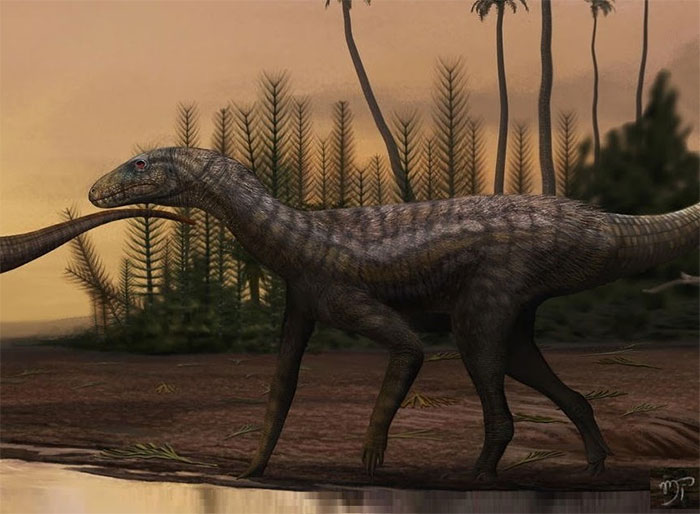237 million year old strange creature revealed: Dinosaur impersonator?
Scientists describe the strange creature they found in Brazil as a "dinosaur that is not a dinosaur".
According to Sci-News , the 237-million-year-old fossil of a strange creature has been unearthed from Triassic rocks in southern Brazil.
It was identified as a completely new species belonging to the extinct reptile group Silesauridae , which includes "dinosaurs that are not dinosaurs," according to a description by a research team led by paleontologist Rodrigo Temp Müller from the Federal University of Santa Maria (Brazil).

Strange creature Gondwanax paraisensis has just been excavated in Brazil - (Photo: Gondwana Research).
A study recently published in the scientific journal Gondwana Research has reconstructed the shape of the newly excavated strange creature: A reptile that looks very much like a dinosaur but has four long, slender limbs, even the two front arms are quite similar to our arms.
It was named Gondwanax paraisensis .
The group of Silesauridae reptiles to which this strange creature belongs remains a mystery.,
According to the most widely accepted arguments, Silesauridae is the close "sister" to the Dinosauria branch, the dinosaurs .
Some researchers also believe that it belongs to a lineage of dinosaurs that once appeared in abundance in South America.
But overall, they were somewhat dinosaur-like and thrived during the Triassic , which is also the era when the first dinosaurs emerged and has sometimes confused paleontologists.
'Regardless of phylogenetic context, Silesauridae have inhabited Triassic landmasses for more than 30 million years,' the authors say.
Because it is much shorter lived than the dinosaur lineage and also so ancient, data on Silesauridae in the paleontological record are limited.
Therefore, the appearance of strange creatures in southern Brazil is a great opportunity for scientists to learn more about this mysterious reptile family, including their origin, as well as their place on the reptile family tree.
This includes answering the question of whether Silesauridae are dinosaurs, and if not, what their specific kinship is, what their common ancestor might be.
At 237 million years old, Gondwanax paraisensis is one of the oldest dinosaur-like creatures ever found.
It also has three interesting sacral vertebrae, a feature that scientists once thought only appeared in more evolved forms of reptiles.
It is one of the oldest morphologically known dinosaurs in South America and one of the oldest silesaurids worldwide.
The skeleton of this animal was found in the Santa Maria Formation in Rio Grande do Sul, Brazil.
There is another Silesauridae species, Gamatavus antiquus , found in the area, so the appearance of the new species may also suggest that South America was an area where this group of reptiles once thrived.
- Discovered a new super-small dinosaur, only 5cm long
- China: Going for a walk, stumbling across a 66 million year old dinosaur egg
- Detecting dinosaur footprint 70 million years old
- Giant 17-meter-long sea monster reveals the secret of 'miracle evolution'
- 110 million year old dinosaur fossils
- 9-year-old boy found fossil dinosaur eggs 66 million years
- Detection of 67 million-year-old dinosaur fossils
- Fossils of dinosaur eggs 70 million years in China
- Detection of vein dinosaurs existed for 80 million years
- Little 3-year-old dinosaur drowned
- Discover the smallest dinosaur footprint ever
- Series of dinosaur footprints revealed after storm in England
 Discovered an ancient centipede fossil 99 million years old
Discovered an ancient centipede fossil 99 million years old Discovered bat-like dinosaurs in China
Discovered bat-like dinosaurs in China Discovered a 200-year-old bronze cannon of the coast
Discovered a 200-year-old bronze cannon of the coast Discover 305 million-year-old spider fossils
Discover 305 million-year-old spider fossils